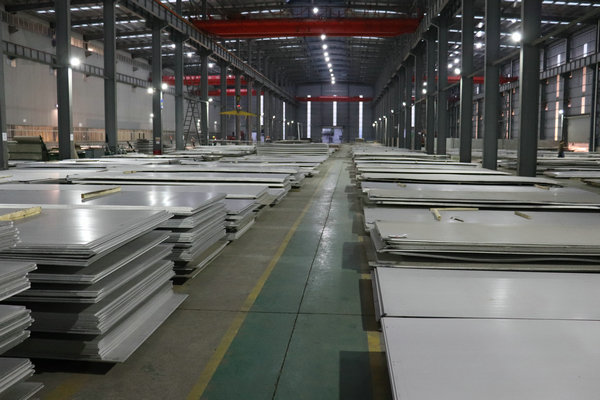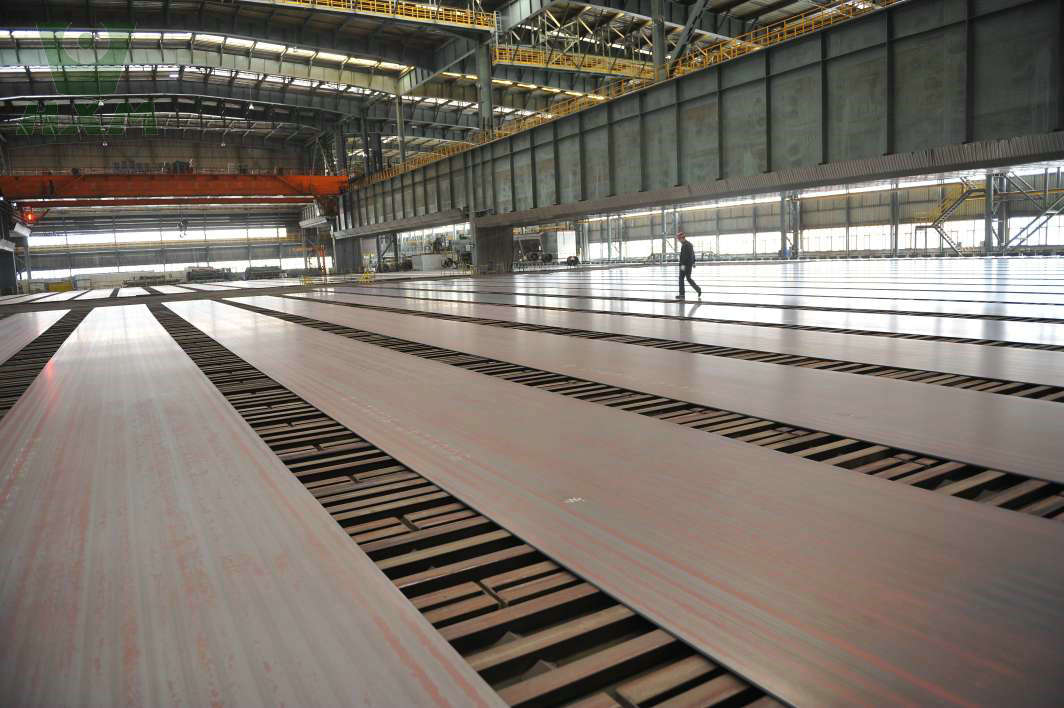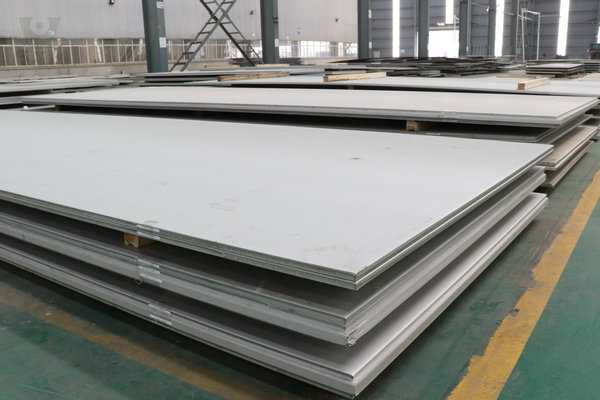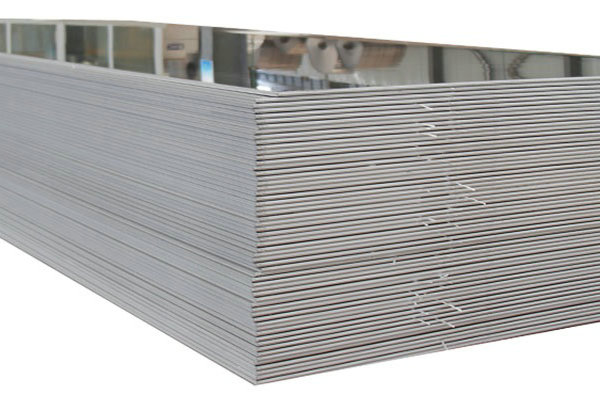Metal Sheet Suppliers Manufacturer
An outstanding Chinese metal sheet manufacturer has exported to more than 40 countries.
Looking forward to your choosing us as your steel sheet supplier in China!
Our Metal Sheet Products
Our products cover a variety of materials, including stainless steel, aluminum alloy, copper, etc., with excellent corrosion resistance, strength, and workability. Whether you need raw material supply or customized processing, we can provide you with a one-stop service to ensure that your needs are best met.
The following are the four major categories of metal raw materials that our company can provide. If you have any questions, please free to contact us, We will quote for you within 24 hours! Looking forward to becoming your China Metal Sheet Suppliers and Manufacturers!
We stock and sell steel plates in all forms and sizes. If you don’t find the steel plate you need here, please contact us directly.
Steel Sheet Suppliers
Huaxiao Metal, is your trustworthy metal sheet supplier and manufacturer! We are committed to providing customers with high-quality metal sheets to meet the needs of various industries, including construction, automotive, electronics, aerospace, and other fields.
As a professional metal sheet supplier, we have advanced production equipment and technical teams to meet our customers’ individual needs and high standards. Whether you need customized sizes, special materials, or complex processing techniques, we can provide you with professional solutions.
Whether you are looking for a reliable sheet metal supplier or need custom processing services, Huaxiao Metal can be your choice. Please contact us to provide you with feasible solutions!

Why Choose Us As Your Metal Sheet Suppliers in China?
Product Quality
Our company's raw materials come from China's TISCO, Baosteel, Delong, and other steel manufacturers. We strictly control the quality of products to ensure that the products received by customers meet international standards and customer requirements.
Delivery Period
We have an efficient supply chain and a professional team, which can process customers' orders in a timely manner and ensure on-time delivery. The specific delivery cycle depends on the product type and quantity, and we will give the accurate delivery time when the customer places an order.
Price
Our metal sheet price is competitive in the market, and we will make a reasonable price according to the customer's order quantity, delivery cycle and other factors. We will try our best to provide customers with the best price while ensuring that product quality and delivery time are not affected.
Customer Service
We have a professional customer service team that can answer customer questions and solve problems in a timely manner. We provide a full range of services from procurement to delivery, and provide customers with after-sales service. Customer satisfaction is our highest pursuit.
Looking forward to becoming your China Metal Sheet Suppliers and Manufacturers!
Things to Consider When Purchasing from China Steel Sheet Manufacturers
When purchasing from a steel plate manufacturer in China, several key considerations can help ensure you make an informed decision and receive a high-quality product. Here are some factors to keep in mind:
- Quality Standards: Verify that manufacturers adhere to international quality standards such as ISO, ASTM, or DIN. This ensures that the steel plates meet certain quality benchmarks.
- Material specifications: Understand the specific requirements of your project and ensure that the manufacturer can provide steel plate that meets those specifications in terms of grade, thickness, size, and surface finish.
- Certifications: Check if the manufacturer has industry-related certifications, such as ISO 9001 (Quality Management) or ISO 14001 (Environmental Management). Certification provides assurance of a manufacturer’s credibility and commitment to quality.
- Production Capabilities: Evaluate the manufacturer’s production capabilities to ensure they can meet your needs within the required timeframe. Consider factors such as lead times, throughput, and the manufacturer’s ability to expand production if needed.
- Customization: Determine if the manufacturer offers customization options tailored to your specific requirements. This may include custom sizes, coatings or finishes.
- Quality control process: Ask the manufacturer about their quality control process throughout the production cycle. This includes raw material inspection, in-process quality inspection and final product testing to ensure consistency and reliability.
- Cost and Payment Terms: Compare prices from multiple sheet metal manufacturers, taking into account factors such as quality, delivery time, and additional services offered. Negotiate favorable payment terms and enter into a contract to protect your interests.
- After-Sales Support: Ask your sheet metal manufacturer about after-sales support. A reliable sheet metal manufacturer should offer ongoing support to resolve any issues that may arise after purchase.
You can choose a reputable steel plate manufacturer in China that meets your requirements and provides high-quality products for your project.
Looking forward to becoming your China Metal Sheet Suppliers and Manufacturers!
FAQ
How to cut Carbon Steel Metal Sheet?
Tools: Tin snips, angle grinder, metal shears, plasma cutter.
Steps:
- Mark the cut line.
- Use tin snips for thin sheets (up to 1.2mm).
- Use an angle grinder or metal shears for thicker sheets.
- Use a plasma cutter for precise cuts on very thick sheets.
Tips: Wear safety gear and secure the sheet before cutting.
How to Cut Stainless Steel Sheets?
Tools: Tin snips, angle grinder, circular saw, laser cutter.
Steps:
- Mark the cut line.
- Use tin snips for thin sheets (up to 1.0mm).
- Use an angle grinder for medium thickness.
- Use a circular saw or laser cutter for thicker or more precise cuts.
Tips: Use cutting oil to reduce heat and clean edges after cutting.
How to Cut Copper Sheets?
Tools: Tin snips, jeweler’s saw, rotary tool, guillotine cutter.
Steps:
- Mark the cut line.
- Use tin snips for thin sheets (up to 0.8mm).
- Use a jeweler’s saw for detailed cuts.
- Use a rotary tool or guillotine cutter for straight cuts on medium-thick sheets.
Tips: Handle carefully to avoid bending and clean edges after cutting.
How to Cut Aluminium Sheet Metal?
Tools: Tin snips, jigsaw, circular saw, angle grinder, rotary tool.
Steps:
- Mark the Cut Line: Use a marker or scribe to draw the desired cut line on the aluminum sheet.
- Using Tin Snips: Ideal for thin aluminum sheets (up to 1.2mm).
- Follow the marked line with straight-cut, left-cut, or right-cut snips, depending on the shape of the cut.
- Using a Jigsaw: Suitable for thicker sheets or curved cuts.
- Secure the sheet and use a fine-toothed blade to follow the cut line.
- Using a Circular Saw: Best for straight cuts on thicker sheets.
- Equip the saw with a carbide-tipped blade designed for cutting non-ferrous metals.
- Clamp the sheet securely and follow the marked line with steady, even pressure.
- Using an Angle Grinder: Useful for medium-thick sheets.
- Attach a metal cutting disc to the grinder.
- Secure the sheet and cut along the marked line, applying consistent pressure.
- Using a Rotary Tool: Good for intricate cuts and small projects.
- Use a metal cutting disc and follow the marked line carefully.
Tips:
- Wear appropriate safety gear, including gloves, safety glasses, and ear protection.
- Use cutting oil or lubricant to reduce heat and make cutting easier.
- Secure the aluminum sheet firmly to prevent movement during cutting.
- Clean and deburr the edges after cutting to ensure a smooth finish and prevent injuries.
How to Weld Sheet Metal?
Prepare the Metal:
- Clean the sheet metal pieces thoroughly using a wire brush or grinder to remove any rust, paint, or contaminants.
- Ensure the edges to be welded are free of any burrs or rough spots.
Set Up Your Work Area:
- Secure the sheet metal pieces in place using welding clamps or magnets to hold them firmly together.
- Position your work area in a well-ventilated space to avoid inhaling harmful fumes.
Choose the Welding Method:
- MIG Welding:
- Set your welding machine to the appropriate settings for the thickness of the sheet metal.
- Use a fine wire (0.6-0.8mm) for better control and less heat input.
- Maintain a steady hand and short arc length to prevent burn-through.
- TIG Welding:
- Use a tungsten electrode and filler rod suitable for the type of metal.
- Set the machine to low amperage to avoid excessive heat.
- Use a pulsing technique to control the heat input and minimize distortion.
- Spot Welding:
- Suitable for joining thin sheet metals quickly.
- Align the metal pieces and use the spot welder to apply pressure and heat to create a weld at specific points.
- MIG Welding:
Welding Process:
- MIG Welding:
- Hold the welding gun at a 15-20 degree angle and start the arc.
- Use a series of short welds (tack welds) along the seam to hold the pieces in place.
- Connect the tacks with a continuous weld, moving steadily along the seam.
- TIG Welding:
- Strike the arc and use the foot pedal to control the heat.
- Add filler rod as needed, moving the torch in a steady motion along the seam.
- Maintain a short arc length to concentrate the heat on the weld area.
- Spot Welding:
- Place the electrodes on either side of the metal pieces.
- Apply pressure and activate the welder to create a weld spot.
- Repeat at regular intervals along the seam.
- MIG Welding:
Cool and Clean the Weld:
- Allow the weld to cool naturally to avoid rapid cooling that can cause cracks.
- Clean the weld area with a wire brush to remove any slag or oxidation.
Inspect the Weld:
- Check the weld for consistency and strength.
- Ensure there are no gaps, cracks, or weak spots in the weld seam.
Tips:
- Practice on scrap pieces of sheet metal before welding your final pieces.
- Adjust the machine settings based on the thickness and type of metal.
- Use tack welds to minimize warping and keep the pieces aligned.
- Work in a well-ventilated area and wear appropriate safety gear at all times.
How Thick is Sheet Metal?
Sheet metal thickness can vary widely depending on the material and the intended application. Here’s a comprehensive guide to understanding sheet metal thickness, including common standards and measurements.
Understanding Sheet Metal Thickness
Sheet metal thickness is typically measured in gauge, millimeters (mm), or inches. The gauge system is commonly used in the United States, while millimeters and inches are used internationally. The gauge number inversely relates to the thickness – the higher the gauge number, the thinner the metal.
Common Sheet Metal Thicknesses
Steel Sheet Metal:
- Gauge: 3 gauge to 38 gauge
- Thickness: Approximately 0.2391 inches (6.07 mm) for 3 gauge to 0.0066 inches (0.168 mm) for 38 gauge
Stainless Steel Sheet Metal:
- Gauge: 3 gauge to 26 gauge
- Thickness: Approximately 0.2391 inches (6.07 mm) for 3 gauge to 0.0187 inches (0.47 mm) for 26 gauge
Aluminum Sheet Metal:
- Gauge: 4 gauge to 38 gauge
- Thickness: Approximately 0.2043 inches (5.19 mm) for 4 gauge to 0.0036 inches (0.091 mm) for 38 gauge
Copper Sheet Metal:
- Gauge: 1 gauge to 20 gauge
- Thickness: Approximately 0.2893 inches (7.35 mm) for 1 gauge to 0.0320 inches (0.81 mm) for 20 gauge
Conversion Between Gauge and Millimeters
Here are some typical conversions for common gauge numbers:
Steel:
- 10 gauge = 0.1345 inches (3.416 mm)
- 12 gauge = 0.1046 inches (2.657 mm)
- 14 gauge = 0.0747 inches (1.897 mm)
- 16 gauge = 0.0598 inches (1.519 mm)
- 18 gauge = 0.0478 inches (1.214 mm)
- 20 gauge = 0.0359 inches (0.911 mm)
Stainless Steel:
- 10 gauge = 0.1406 inches (3.571 mm)
- 12 gauge = 0.1094 inches (2.778 mm)
- 14 gauge = 0.0781 inches (1.984 mm)
- 16 gauge = 0.0625 inches (1.588 mm)
- 18 gauge = 0.0500 inches (1.270 mm)
- 20 gauge = 0.0375 inches (0.952 mm)
Aluminum:
- 10 gauge = 0.1019 inches (2.588 mm)
- 12 gauge = 0.0808 inches (2.052 mm)
- 14 gauge = 0.0641 inches (1.628 mm)
- 16 gauge = 0.0508 inches (1.290 mm)
- 18 gauge = 0.0403 inches (1.024 mm)
- 20 gauge = 0.0320 inches (0.813 mm)
Factors Influencing Sheet Metal Thickness Selection
Material Type:
- Different metals have different strength and weight properties. For example, steel is stronger but heavier than aluminum.
Application:
- The intended use of the sheet metal often dictates the required thickness. For structural applications, thicker metal is usually necessary.
Formability:
- Thinner sheets are easier to form and bend but may not provide the necessary strength for some applications.
Cost:
- Thicker metal sheets are generally more expensive due to the higher material content.
Common Applications by Thickness
Thin Sheets (20-30 gauge):
- Automotive body panels
- Roofing and siding
- Ductwork
Medium Sheets (14-18 gauge):
- Appliance enclosures
- HVAC equipment
- Furniture
Thick Sheets (10-12 gauge):
- Structural components
- Heavy-duty machinery
- Industrial equipment
How do You Bend Sheet Metal?
Bending sheet metal is a fundamental process in metalworking used to create various shapes and structures. Proper bending techniques are crucial for achieving precise angles and maintaining the integrity of the metal. This guide covers the tools, techniques, and tips for bending different types of sheet metal, including carbon steel, stainless steel, and aluminum.
Tools Needed for Bending Sheet Metal
- Bending Brake:
- A mechanical or hydraulic device used for bending large sheets with high precision.
- Hand Seamer:
- A handheld tool used for making precise, small bends.
- Vise and Hammer:
- Used for manual bending of small or thin sheets.
- Sheet Metal Roller:
- A tool for making curved or cylindrical bends.
- Press Brake:
- A powerful machine used for bending thick and heavy sheet metal with high precision.
- Clamps and Workbench:
- Essential for securing the metal sheet during bending.
Bending Techniques for Sheet Metal
Using a Bending Brake:
- Step 1: Measure and mark the bend line on the sheet metal using a scribe or marker.
- Step 2: Open the bending brake and place the sheet metal between the clamping bar and the bed.
- Step 3: Align the bend line with the edge of the clamping bar.
- Step 4: Lower the clamping bar to hold the sheet metal firmly in place.
- Step 5: Lift the bending handle to raise the bending leaf, forming the desired angle.
- Step 6: Release the clamping bar and remove the bent sheet metal.
Using a Hand Seamer:
- Step 1: Measure and mark the bend line on the sheet metal.
- Step 2: Place the sheet metal in the jaws of the hand seamer, aligning the bend line with the tool’s edge.
- Step 3: Squeeze the handles to clamp the metal securely.
- Step 4: Apply steady pressure and bend the metal to the desired angle.
- Step 5: Move the hand seamer along the bend line to complete the bend.
Using a Vise and Hammer:
- Step 1: Mark the bend line on the sheet metal.
- Step 2: Place the sheet metal in the vise, aligning the bend line with the vise jaws.
- Step 3: Tighten the vise to hold the metal securely.
- Step 4: Use a mallet or hammer to gently tap the metal along the bend line, gradually forming the bend.
- Step 5: Continue hammering until the desired angle is achieved.
Using a Sheet Metal Roller:
- Step 1: Adjust the roller to the desired bend radius.
- Step 2: Feed the sheet metal between the rollers.
- Step 3: Rotate the rollers to gradually bend the metal into a curved shape.
- Step 4: Adjust the roller pressure as needed to achieve the desired curvature.
Using a Press Brake:
- Step 1: Program the press brake with the desired bend angle and dimensions.
- Step 2: Place the sheet metal on the press brake bed, aligning it with the punch and die.
- Step 3: Activate the press brake to lower the punch onto the sheet metal, forming the bend.
- Step 4: Release the pressure and remove the bent sheet metal.
Tips for Bending Different Types of Sheet Metal
Carbon Steel:
- Tip: Apply steady pressure to avoid cracking or warping.
- Tip: Use a bending brake or press brake for precise bends.
- Tip: Heat the metal slightly if bending thick sheets to make the process easier.
Stainless Steel:
- Tip: Use high-quality tools to prevent scratches and maintain the material’s finish.
- Tip: Apply lubrication to reduce friction and avoid galling.
- Tip: Consider using a press brake for thick sheets to achieve clean and accurate bends.
Aluminum:
- Tip: Use a bending brake for thin sheets to prevent kinking.
- Tip: For thick sheets, use a press brake and bend slowly to avoid cracking.
- Tip: Anneal the metal if necessary to increase its ductility before bending.
Does Sheet Metal Rust?
The tendency of sheet metal to rust depends on the type of metal used. Here is a simple overview of common sheet metals and their rusting tendencies:
Carbon Steel Sheet Metal
- Rusting: Highly susceptible to rust.
- Prevention: Apply protective coatings like paint, oil, or galvanization. Keep in a dry environment and maintain regularly.
Stainless Steel Sheet Metal
- Rusting: Low susceptibility due to chromium content.
- Prevention: Use the right grade (e.g., 316 for marine environments). Regularly clean and avoid scratches to maintain the protective layer.
Aluminum Sheet Metal
- Rusting: Does not rust, but can corrode.
- Prevention: Apply anodization or paint. Avoid contact with more noble metals to prevent galvanic corrosion. Regularly clean and maintained.
Copper Sheet Metal
- Rusting: Does not rust but forms a protective green patina.
- Prevention: Allow natural patina to form, or apply clear lacquer or wax to maintain a shiny appearance. Regular cleaning can help prevent dirt buildup.
Keep In Touch
Huaxiao Metal is one of China’s leading steel sheet manufacturing companies, headquartered in Shanghai, China. We are committed to providing high-quality steel sheet products that are widely used in the construction, infrastructure, and manufacturing industries. Contact us for a metal sheet quote!







